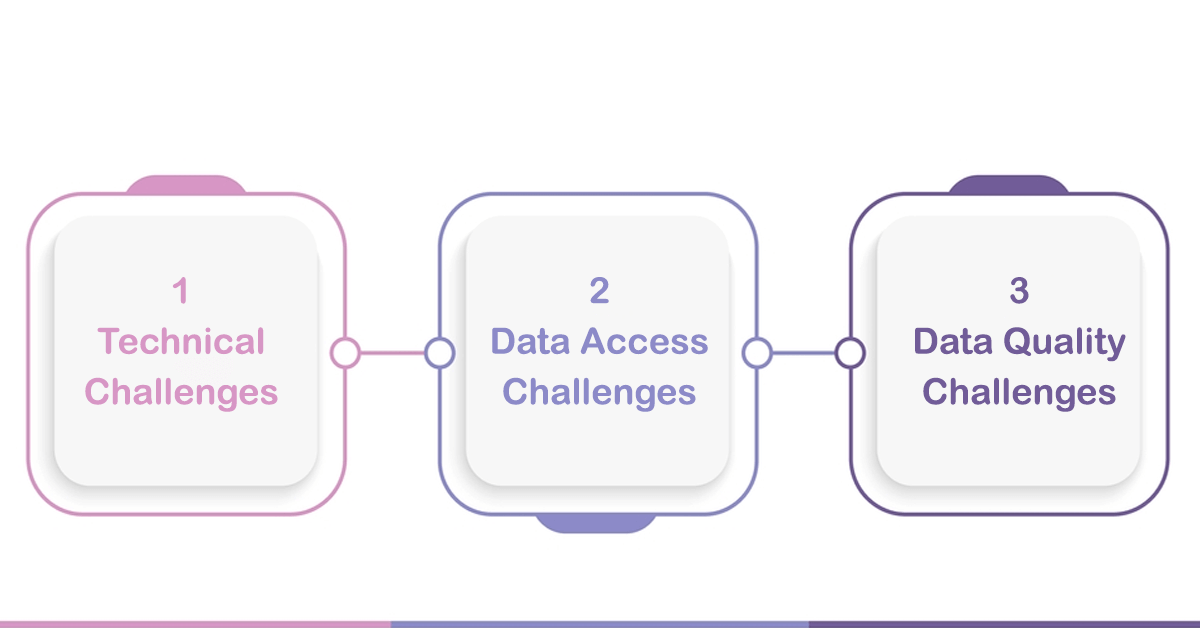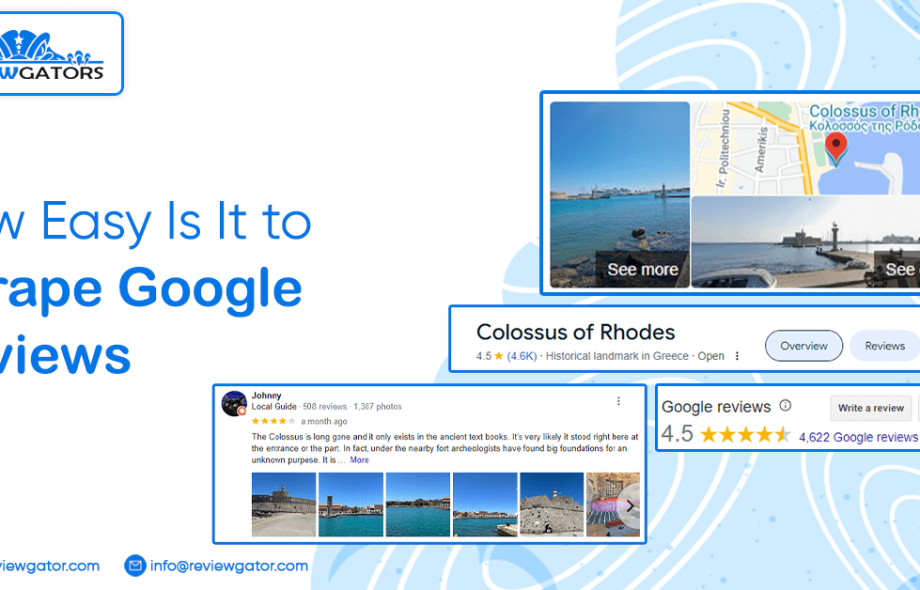Have you ever wished you could put together all the Google reviews? Those insightful glimpses into customer experiences will fuel product development and skyrocket sales. But manually combing through endless reviews can be a tiring job. What if there was a way to automate this review roundup and unlock the data in minutes? This blog delves deep into the world of scraping Google Reviews, showing you how to transform this tedious task into a quick and easy win, empowering you to harness the power of customer feedback.
What is Google Review Scraping?
Google Reviews are very useful for both businesses and customers. They provide important information about customers’ thoughts and can greatly affect how people see a brand.
It’s the process of automatically collecting data from Google Reviews on businesses. Instead of manual copy paste work, scraping tools extract information like:
- Review text
- Star rating
- Reviewer name (if available)
- Date of review
Google Review Scraper
A Google Review scraper is a program that automatically gathers information about different businesses from Google Reviews.
Here’s how Google Review Scraper works:
- You provide the scraper with the URL of a specific business listing on Google Maps. This tells the scraper exactly where to find the reviews you’re interested in.
- The scraper acts like a web browser, but it analyses the underlying website structure instead of displaying the information for you.
- The scraper finds the parts that have the review details you want, like the words in the review, the number of stars given, the name of the person who wrote it (if it’s there), and the date of the review.
- After the scraper collects all the important information, it puts it into a simple format, like a CSV file, which is easy to look at and work within spreadsheets or other programs for more detailed study.
Google Review Scraping using Python
Google discourages web scraping practices that overload their servers or violate user privacy. While it’s possible to scrape Google Reviews with Python, it’s important to prioritize ethical practices and respect their Terms of Service (TOS). Here’s an overview:
Choose a Web Scraping Library
Popular options for Python include Beautiful Soup and Selenium. Beautiful Soup excels at parsing HTML content, while Selenium allows more browser-like interaction, which can help navigate dynamic content on Google.
Understand Google’s Structure
Using browser developer tools, inspect the HTML structure of a Google business listing with reviews. Identify the elements containing the needed review data (text, rating, etc.). Identify the HTML tags associated with this data.
Write Python Script
- Import the necessary libraries (requests, Beautiful Soup).
- Define a function to take a business URL as input.
- Use requests to fetch the HTML content of the business listing.
- Use Beautiful Soup to parse the HTML content and navigate to the sections containing review elements using the identified HTML tags (e.g., CSS selectors).
- Extract the desired data points (text, rating, name, date) and store them in a list or dictionary.
- Consider using loops to iterate through multiple pages of reviews if pagination exists.
- Finally, write the extracted data to a file (CSV, JSON) for further analysis.
Alternate Methods to Scrape Google Reviews

Though using web scraping libraries is the most common approach, it does involve coding knowledge and is complex to maintain. Here are some of the alternative approaches with no or minimal coding knowledge.
Google Maps API (Limited Use):
Google offers a Maps Platform with APIs for authorized businesses. This might be a suitable option if you need to review data for specific locations you manage. However, it requires authentication and might not be suitable for large-scale scraping of public reviews.
Pre-built Scraping Tools
Several online tools offer scraping functionalities for Google Reviews. These tools often have user-friendly interfaces and handle complexities like dynamic content. Consider options with clear pricing structures and responsible scraping practices.
Cloud-Based Scraping Services
Cloud services use their own servers to collect data from the web, which helps prevent problems with too much traffic on Google’s servers and reduces the risk of your own IP address getting blocked. They have tools that deal with website navigation, where to keep the data, and changing the internet address so you don’t get caught. Usually, you pay for these services based on how much you use them.
Google My Business Reviews (For Your Business):
If you want to analyze reviews for your business, Google My Business offers built-in review management tools. This platform lets you access, respond to, and analyze reviews directly. However, this approach only works for your business and doesn’t offer access to reviews of competitors.
Partner with Data Providers
Certain data providers might offer access to Google Review datasets. This can be a good option if you need historical data or a broader range of reviews. Limited access might exist, and data acquisition might involve costs. Research the data source and ensure ethical data collection practices.
Understanding the Challenges

Scraping Google reviews can be a valuable way to gather data for analysis, but it comes with its own set of hurdles. Here’s a breakdown of the common challenges you might face:
Technical Challenges
- Changing Layouts and Algorithms Google frequently updates its website design and search algorithms. This can break your scraper if it relies on specific HTML elements or patterns that suddenly change.
- Bot Detection Mechanisms Google has sophisticated systems in place to identify and block automated bots. These can include CAPTCHAs, IP bans, and browser fingerprinting, making it difficult for your scraper to appear as a legitimate user.
- Dynamic Content A lot of Google reviews use JavaScript to load content dynamically. This means simply downloading the static HTML of a page might not be enough to capture all the reviews.
Data Access Challenges
- Rate Limiting Google limits the frequency of requests from a single IP address within a certain timeframe, exceeding can lead to temporary blocks, hindering your scraping process.
- Legality and Ethics Google’s terms of service forbid scraping their content without permission. It’s important to be aware of the legal and ethical implications before scraping Google reviews.
Data Quality Challenges
- Personalization Google personalizes search results, including reviews, based on factors like location and search history. This means the data you scrape might not be representative of a broader audience.
- Data Structuring Google review pages contain a lot of information beyond the reviews themselves, like ads and related searches. Extracting the specific data points you need (reviewer name, rating, etc.) can be a challenge.
- Incomplete Data Your scraper might miss reviews that are loaded after the initial page load or hidden behind “See more” buttons.
If you decide to scrape Google reviews, be prepared to adapt your scraper to these challenges and prioritize ethical considerations. Scraping a small number of reviews might be manageable, but scaling up to scrape a large amount of data can be complex and resource-intensive.
Conclusion
While Google Review scraping offers a treasure trove of customer insights, navigating its technical and ethical complexities can be a real adventure. Now, you don’t have to go it alone. Third-party data providers like ReviewGators can be your knight in shining armour. They handle the scraping responsibly and efficiently, ensuring you get high-quality, compliant data.
This frees you to focus on what truly matters: understanding your customers and leveraging their feedback to take your business to the next level.
Know more https://www.reviewgators.com/how-to-scrape-google-reviews.php
 :
https://www.reviewgators.com
:
https://www.reviewgators.com












